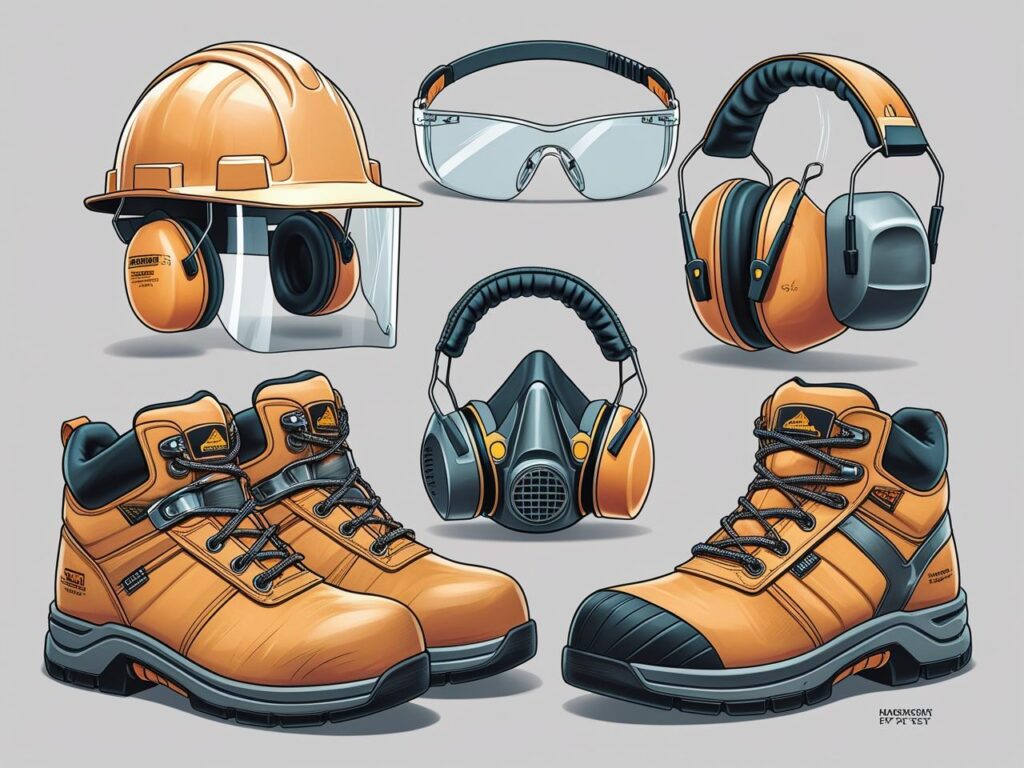Introduction
Personal protective equipment (PPE at work plays a crucial role in ensuring the safety and health of employees across industries. Whether you work in construction, manufacturing, healthcare, or offices with specific risks, PPE provides the first line of defense against workplace hazards. From safety helmets to protective footwear, PPE helps reduce the chances of accidents and injuries while promoting a culture of safety. In this guide, we will explore the various types of PPE, their importance, and best practices for using them effectively to ensure worker safety.
What is Personal Protective Equipment (PPE)?
Personal protective equipment (PPE) refers to specialized clothing or equipment worn by employees to protect themselves from workplace hazards. PPE is designed to minimize exposure to risks that cannot be eliminated through engineering or administrative controls.
Common examples of PPE include:
- Safety helmets and hard hats
- Safety goggles and face shields
- Respiratory protection (masks and respirators)
- Protective gloves
- Safety footwear
- Hearing protection (earplugs and earmuffs)
- High-visibility clothing
Why is PPE at Work Important?
Using PPE at work is not just a legal requirement in many industries—it is essential for protecting the lives and well-being of employees.
Key Benefits of PPE:
- Prevents injuries and fatalities by minimizing exposure to hazards.
- Promotes workplace safety culture by showing employees their health is valued.
- Improves productivity because healthy employees can work more efficiently.
- Ensures compliance with occupational safety and health regulations.
Types of Personal Protective Equipment (PPE at Work)
1. Head Protection
- Safety helmets protect against falling objects, bumps, and electrical hazards.
- Hard hats are mandatory in construction and heavy industries.
2. Eye and Face Protection
- Safety goggles and face shields guard against chemical splashes, dust, and sparks.
- Welding masks protect from harmful radiation and flying debris.
3. Hearing Protection
- Earplugs and earmuffs reduce the impact of loud machinery and tools.
- Important in industries such as construction, aviation, and factories.
4. Respiratory Protection
- Masks and respirators protect against dust, fumes, and hazardous gases.
- Essential for healthcare workers, painters, and chemical industries.
5. Hand and Arm Protection
- Gloves protect against cuts, burns, and harmful substances.
- Types include cut-resistant, heat-resistant, and chemical-resistant gloves.
6. Foot and Leg Protection
- Safety boots prevent injuries from falling objects, slips, and electrical hazards.
- Steel-toe boots and slip-resistant footwear are commonly used.
7. Body Protection
High-visibility vests, lab coats, aprons, and flame-resistant clothing.
Provide protection against spills, fire, and sharp Best Practices for Using PPE at Work

Best Practices for Using PPE at Work
Conduct hazard assessments – Identify workplace risks and match PPE accordingly.
Provide proper training – Teach employees how to wear and maintain PPE correctly.
Ensure correct fit – Ill-fitting PPE reduces protection and comfort.
Regular inspection – Check for damage, wear, or contamination before each use.
Replace when necessary – Damaged PPE should never be used.
Encourage reporting – Workers should report issues with PPE immediately.
Employer Responsibilities for PPE
Provide PPE at no cost to employees.
Train staff on correct use and limitations.
Maintain and replace PPE when necessary.
Enforce PPE policies in the workplace.
Employee Responsibilities for PPE
Wear PPE consistently and correctly.
Care for PPE and store it properly.
Report damaged or defective PPE to supervisors.
Follow workplace safety rules and training.
Common Challenges in PPE Usage
- Lack of comfort leading to non-compliance.
- Insufficient training on how to use PPE properly.
- Employers not enforcing PPE policies.
- Employees assuming PPE alone is enough without safe practices.
FAQs About Personal Protective Equipment (PPE at Work)
1. What does PPE at work stand for?
PPE at work stands for Personal Protective Equipment at Work. It refers to safety gear and equipment used by employees to protect against workplace hazards.
2. Why is PPE important in the workplace?
PPE is important because it reduces the risk of accidents, injuries, and illnesses by providing a protective barrier against potential hazards.
3. Who is responsible for providing PPE at work?
Employers are responsible for providing PPE to employees free of charge and ensuring it is safe, effective, and maintained properly.
4. Can PPE replace other safety measures?
No. PPE is the last line of defense. Employers should first use engineering controls, administrative controls, and safe work practices before relying on PPE.
5. How often should PPE be replaced?
PPE should be replaced when it is damaged, expired, or no longer provides adequate protection. Regular inspections are crucial.
Conclusion
Personal protective equipment (PPE at work) is a vital part of maintaining a safe and healthy workplace. From helmets and gloves to respirators and safety shoes, PPE helps prevent injuries and ensures compliance with safety standards. Both employers and employees share the responsibility of ensuring PPE is used effectively. By building awareness, providing training, and maintaining safety equipment, organizations can create a culture of protection and care that benefits everyone.
The Ultimate Guide to Safety Helmets
here is website to get Ppes